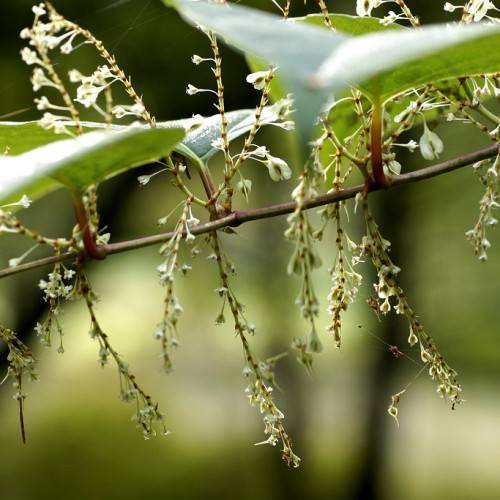
Japanese knotweed
Fallopia japonica ( syn. Reynoutria )
Cycle:
Herbaceous Perennial
Watering:
Average
Hardiness Zone:
5
Flowers:
Flowers In Summer
Sun:
Deep shade, Filtered shade, Full sun, Part sun/part shade
Fruits:
Fruits In Autumn Ready In
Leaf:
Yes
Growth Rate:
High
Drought Tolerant:
Yes
Salt Tolerant:
Yes
Invasive:
Yes
watering
Japanese Knotweed should be watered 2 - 3 times a week during the growing season. Water until the soil is lightly damp to the touch. Allow the soil to dry out slightly between each watering. In colder weather, reduce watering to once a week. During the winter months, reduce watering significantly, and only water when the soil is dry to the touch. Japanese Knotweed needs a lot of moisture to actively grow; however, it can become prone to disease if the soil is too wet for too long.
sunlight
Japanese knotweed, also known as Fallopia japonica (formerly Reynoutria japonica), prefers full sun exposure, with 5 to 6 hours of direct sunlight being optimal. Since this plant is native to the temperate areas of East Asia, it is best grown in USDA hardiness zones 4 to 9 and grows well in most soil types. It is important to note that this species can tolerate wet soil, but it may die back if the soil gets too dry in the summer months. Additionally, Japanese knotweed will tolerate shady areas but will not thrive in them, so full sun exposure is preferred.
pruning
Japanese knotweed (Fallopia japonica, syn. Reynoutria) should be pruned once a year, preferably at the beginning of April. Pruning should be done late enough that the plant doesn’t start flowering and seeding, but early enough that the new growth can develop before winter sets in. When pruning, all top growth should be removed to within 15-20cm from the ground. The pruned material should then be removed from the site. Pruning will keep the Japanese knotweed under control and reduce the amount of potential new growth for the next season.
